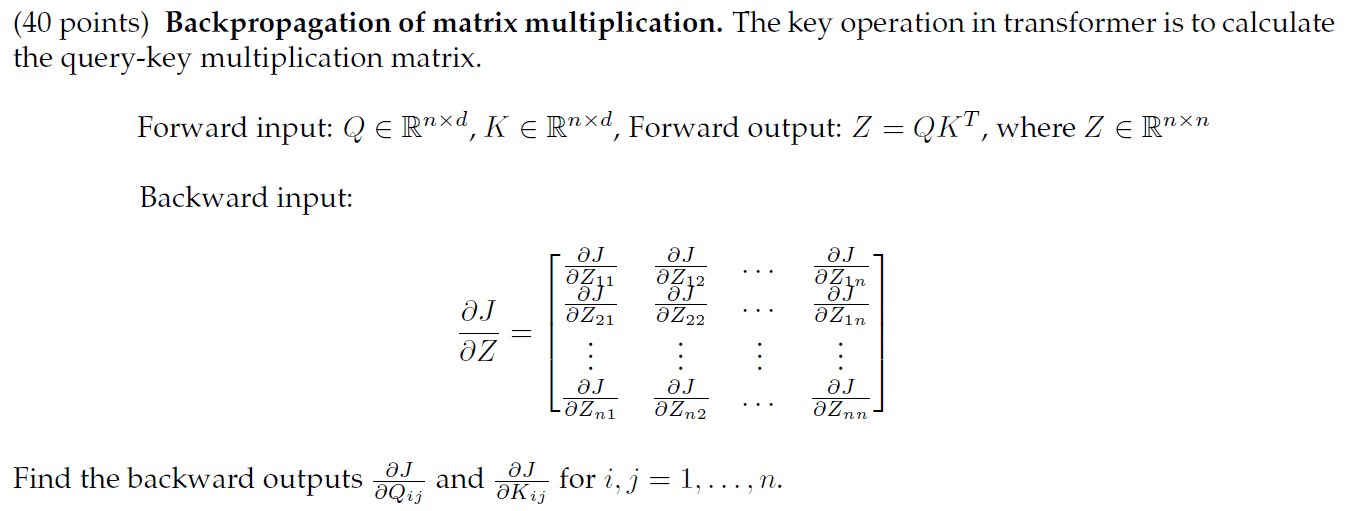
Sia
(40 points) Backpropagation of matrix multiplication. The key operation in transformer is to calculate
the query-key multiplication matrix.
Forward input: Q E Rnxd, K E Rnxd Forward output: Z = QKT, where Z E Rnxn
Backward input:
aJ
a.J
OZin
:
oz
aJ
aJ
aJ
OZn1
0Zn2
aZnn
aJ
aJ
and
for i,j =
Find the backward outputs
n.
,
aQij
SKij

Answer from Sia
Posted about 1 year ago
To solve the backpropagation problem for matrix multiplication in the context of transformers, we need to compute the gradients ∂J/∂Q and ∂J/∂K based on the forward output Z = QK^T.
The backward outputs can be derived using the chain rule of calculus.
The gradients can be computed as follows:
1. The forward output is given by .
2. The Jacobian matrix for the backward input is .
3. To find , we use the relation:
where is the matrix of keys.
4. To find , we use the relation:
where is the transpose of the query matrix.
Therefore, the backward outputs are given by the above equations for ranging from 1 to .
Not the question you are looking for? Ask here!
Enter question by text
Enter question by image
Unlock Smarter Learning with AskSia Super!
Join Super, our all-in-one AI solution that can greatly improve your learning efficiency.
30% higher accuracy than GPT-4o
Entire learning journey support
The most student-friendly features
Study Other Question